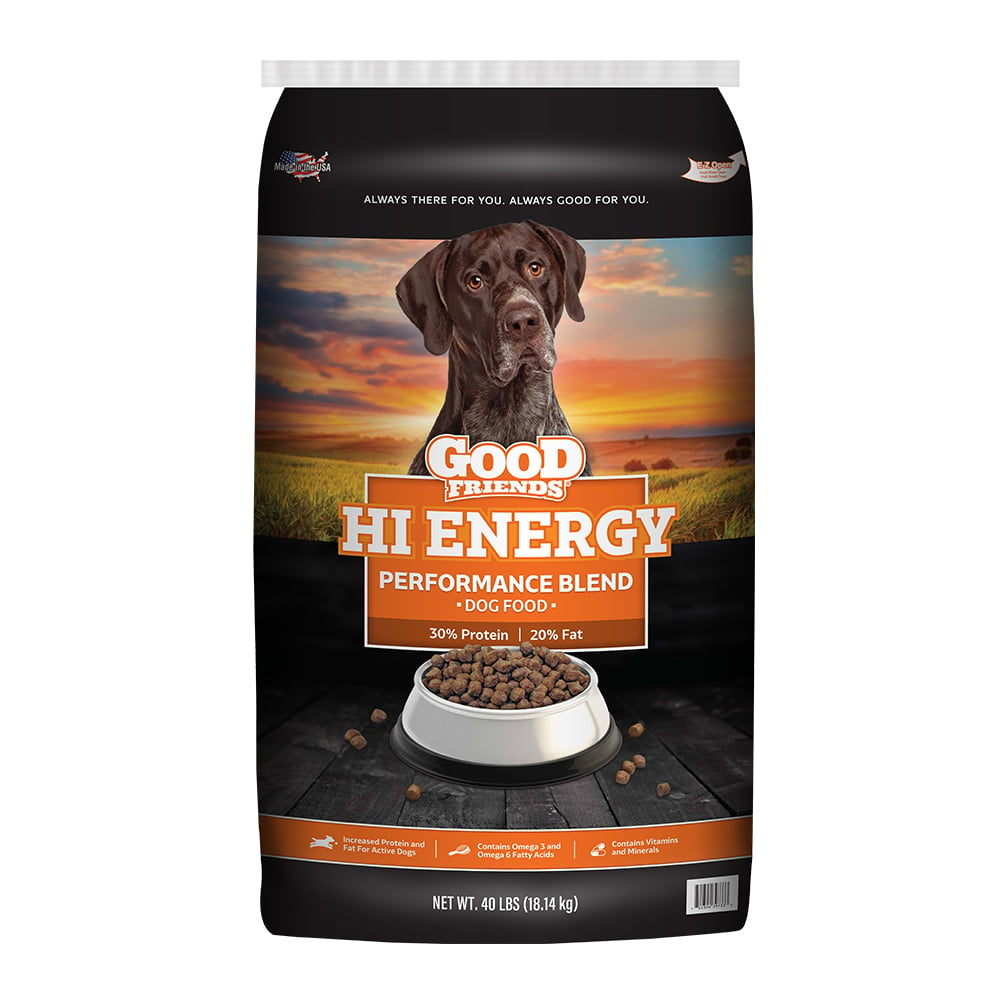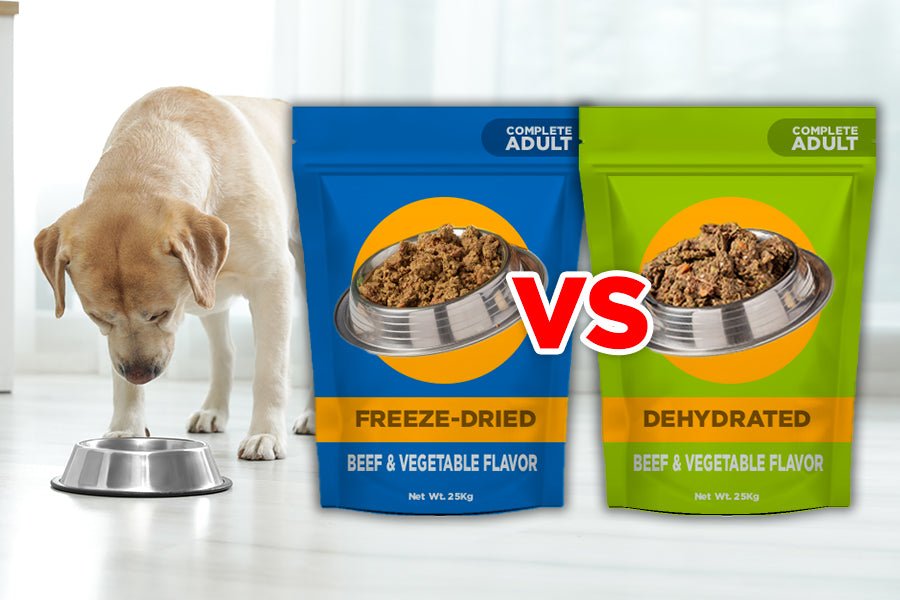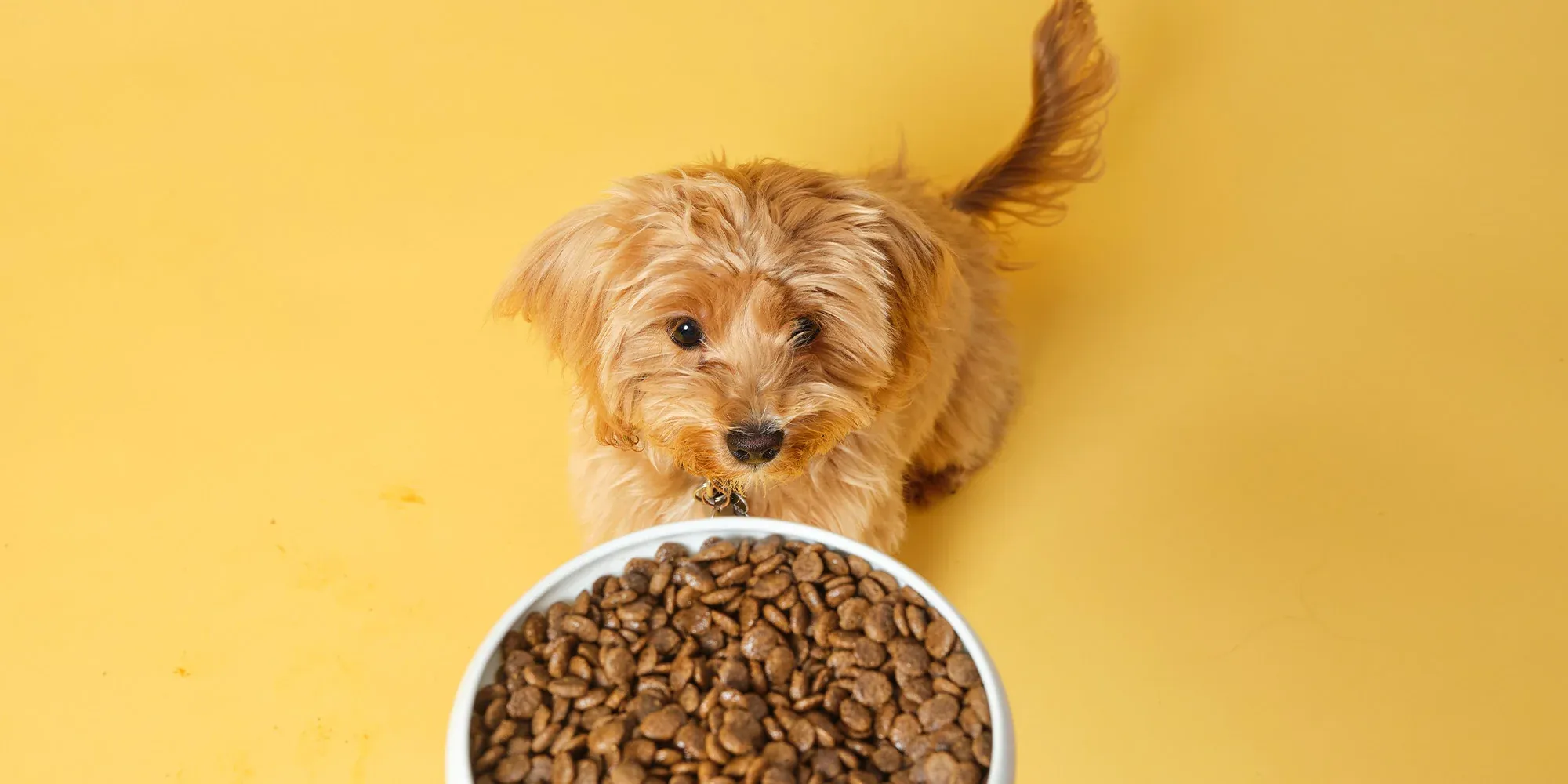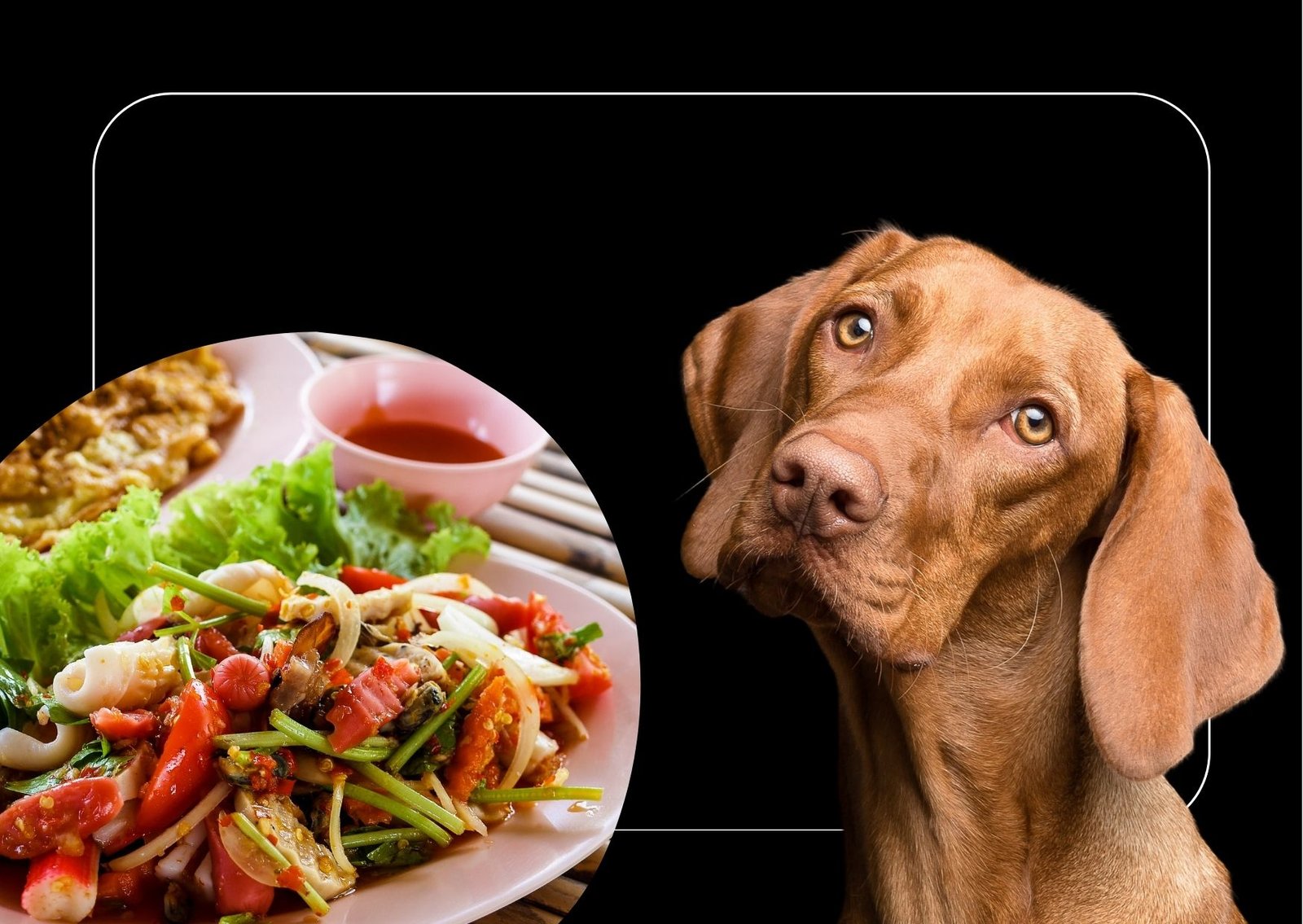Find out how long is dog food good for? Dog food typically has an expiration date of around 12-18 months from the date of manufacturing. It’s essential to check the packaging for the specific “best by” or “use by” date to ensure it’s safe for your pet.
Proper storage in a cool, dry place can also extend its shelf life. As a responsible pet owner, understanding the shelf life of dog food is vital for your pet’s well-being. Whether you purchase dry kibble, wet food, or raw options, knowing how long it remains safe and nutritious is crucial.
Proper storage and handling of the food can make a significant difference in preserving its quality. By staying informed about the recommended expiration dates and storage guidelines, you can ensure that your furry friend enjoys healthy and safe meals.
Types Of Dog Food
For them to remain healthy and active, dogs need a balanced diet. Different types of dog food cater to different nutritional needs and preferences. Understanding the types of dog food available can help you choose the best option for your furry friend.
Dry Dog Food
Dry dog food, also known as kibble, is a popular option due to its convenience and longer shelf life. It is made by combining ingredients and then extruding them into bite-sized pieces. The process removes the moisture, resulting in a crunchy texture that helps to keep your dog’s teeth clean. Dry dog food contains a balanced mix of nutrients and is generally affordable.
Canned Dog Food
Canned dog food is known for its high moisture content and strong aroma, making it an enticing option for picky eaters. The canning process helps to retain the nutritional value and flavor of the ingredients. It can be a good choice for dogs with dental issues or those needing extra hydration. Canned dog food often contains high-quality proteins and can be suitable for dogs with specific dietary requirements.
Semi-moist Dog Food
Semi-moist dog food offers a middle ground between dry and canned options. It has a chewy texture and typically comes in single-serve packets. However, it often contains higher levels of sugar, salt, and artificial additives to maintain its texture and flavor. It can be a convenient option for travel or as an occasional treat, but it’s important to consider its impact on your dog’s overall diet. Semi-moist dog food is popular due to its palatability and convenience, but it should be given in moderation.

Credit: www.ruralking.com
Storage Guidelines
Properly storing dog food is essential to ensure its freshness and maintain its nutritional value. By following these storage guidelines, you can keep your furry friend’s food safe and tasty for longer.
Proper Storage Conditions
Dog food should be stored in cool, dry places to prevent spoilage and maintain quality. Here are some tips for proper storage conditions:
- Keep it sealed: Always store dog food in its original packaging or airtight containers to maintain freshness and prevent exposure to air and moisture.
- Avoid temperature extremes: Find a storage area that stays consistently cool, ideally between 50°F (10°C) and 70°F (21°C). Avoid areas with excessive heat or direct sunlight, as high temperatures can cause the food to spoil or lose its nutritional value.
- Prevent pest infestation: Store dog food in an inaccessible location to rodents, insects, and other pests. Consider using a pet food storage container with a secure lid to deter pests.
- Keep it off the floor: Elevate the dog food containers or store them on shelves to protect them from potential contaminants on the floor.
Signs Of Spoiled Dog Food
Knowing the signs of spoiled dog food is crucial to ensure that your pet consumes safe and healthy meals. Pay attention to the following signs:
- Foul odor: If the dog food has an unpleasant or rancid smell, it may be spoiled.
- Unusual texture or appearance: Mold, clumps, or discoloration can indicate spoilage.
- Pest infestation: If you notice pests, such as insects or rodents, near the dog food, it may be contaminated.
- Change in taste: If your dog suddenly refuses to eat their regular food or shows signs of discomfort after consuming it, the food may have gone bad.
By following the proper storage guidelines and being aware of signs of spoiled dog food, you can ensure that your furry friend receives high-quality, safe meals every day.
Factors Affecting Shelf Life
Dog food shelf life can be affected by factors such as packaging, storage conditions, and ingredients. Properly stored dry dog food can last for up to one year, while canned dog food typically lasts for 2-5 years. It is important to check the expiration date and follow storage instructions to ensure the safety and quality of your furry friend’s food.
Factors Affecting Shelf Life
The shelf life of dog food is influenced by several essential factors that determine its longevity and quality. Understanding these factors is crucial for pet owners to ensure their dogs receive safe and nutritious food. The primary elements that affect the shelf life of dog food are the ingredients used, the preservatives, and the packaging.
Ingredients Used
The quality and types of ingredients used in dog food significantly impact its shelf life. Natural ingredients such as meats, fats, and oils can degrade more rapidly than artificial preservatives. Additionally, the processing and storage of these ingredients can affect the overall quality and durability of the dog food.
Preservatives
Dog food’s shelf life is significantly increased by the presence of preservatives. Natural preservatives such as vitamins E and C are often used in premium dog food to maintain freshness. On the other hand, artificial preservatives like BHA and BHT have a longer-lasting effect. Understanding the type and quantity of preservatives in dog food can provide insights into its expected shelf life.
Packaging
Dog food packaging is another critical factor influencing its shelf life. Airtight packaging can prevent exposure to air and moisture, helping to maintain the food’s freshness. Additionally, opaque packaging can protect the food from light exposure, which can lead to the degradation of nutrients. Understanding the packaging and storage recommendations can significantly impact the shelf life of dog food.
In summary, the shelf life of dog food is determined by the ingredients used, the presence of preservatives, and the quality of packaging. Pet owners must be aware of these factors to ensure their dogs receive high-quality and safe food that meets their nutritional needs.
How Long is Dog Food Good for? What was in the past, Bengal knows better about what will happen in the future-Click here

Credit: sidebysidepet.com
Common Misconceptions
Many pet owners have several common misconceptions about dog food. One of the most important misconceptions is about how long dog food is actually good for. Let’s debunk some of these misconceptions so you can ensure your furry friend is getting the best nutrition.
Expiration Dates Vs. Best By Dates
One of the most common misconceptions about dog food is the difference between expiration dates and best-by dates. Many people assume that the expiration date is the definitive date at which the dog food should be discarded. This isn’t always the case, though.
Expiration dates indicate the last day on which the product should be consumed for safety reasons. This means that the product may not be safe to consume after this date. On the other hand, best-by dates are more about the quality and freshness of the dog food. They suggest that the product is at its peak quality until this date. Beyond the best-by date, dog food may not taste as good as it should, but it doesn’t necessarily mean it is unsafe to consume.
When determining how long your dog food is good for, it is important to consider both the expiration date and the best-by date. If the dog food is past its expiration date, it is best to err on the side of caution and discard it. However, if it is past the best-by date and it smells and looks fine, it is probably still safe to feed your dog.
Freezing Dog Food
Another common misconception is regarding freezing dog food. Many pet owners are unsure whether freezing their dog’s food is safe and effective. The truth is that freezing dog food can be a great way to extend its shelf life.
When freezing dog food, it is important to do so in an airtight container or bag to prevent any freezer burn. Freezing the food can help to slow down the growth of bacteria and other microorganisms, keeping the food safe for your dog to consume. However, it is important to note that freezing can affect the texture and flavor of the dog food. Some dogs may not enjoy the taste of thawed dog food as much as fresh food.
If you choose to freeze your dog’s food, make sure to label the container or bag with the date it was frozen. This will help you keep track of how long it has been frozen and ensure that you use it within a reasonable time period. As a general rule, frozen dog food can be stored for up to three months without significantly losing quality.
Extending Shelf Life
Using Airtight Containers
Storing dog food in airtight containers helps prevent spoilage and maintains freshness. Airtight containers protect the food from moisture, oxygen, and pests.
Rotating Stock Regularly
Regularly rotating your dog’s food ensures that older stock is used first, reducing waste and keeping the food fresh. Check expiration dates and use the oldest food first.

Credit: blog.tryfi.com
Safety Concerns
Dog food safety concerns are crucial to ensure your furry friend’s well-being. Let’s explore the health risks and allergens.
Health Risks Of Expired Dog Food
Expired dog food poses health risks, leading to potential illness or digestive issues.
Mold and bacteria growth in expired food can cause food poisoning in dogs.
Allergies And Contaminants
Expired dog food may contain allergens that trigger allergic reactions in your pet.
Contaminants in old dog food, such as toxins and chemicals, can be harmful to your dog’s health.
How Long is Dog Food Good for Read your questions carefully to get more detailed knowledge about it
Frequently Asked Questions
How Long is Dog Food Good for?
Dog food can last up to 12 to 18 months.
Does Dry Dog Food Expire?
Yes, dry dog food does expire. It typically lasts 12-18 months from the date of manufacture. After the expiration date, the food may lose its nutritional value and spoil. Always check the packaging for the best before date and store it properly to maintain its quality.
How Long Can You Keep Dry Dog Food Out?
Dry dog food can be stored in a sealed container for 4-6 weeks. It’s best to store it in a cool, dry place away from sunlight and moisture.
How Long Is Canned Dog Food Good For After Opening?
Canned dog food is good for 2-3 days in the fridge after opening. Always check the label for specific instructions.
How Long Will Vacuum Sealed Dry Dog Food Last?
Vacuum-sealed dry dog food can last up to 6 months when properly stored.
How Long is Dog Food Good for? Click here for more details on this topic – Click here
Conclusion
Understanding the shelf life of dog food is essential for your furry friend’s health. By knowing the expiration date, properly storing the food, and following manufacturer recommendations, you can ensure that your dog consumes safe and nutritious meals.
Prioritizing the quality and freshness of your dog’s food is key to keeping them happy and healthy.

Hello I am Farhana I have been doing research on dogs since last 10 years. I have been doing research on dog special parts or dog food since last 10 years. I have gained knowledge about my dog in these ten years so. I want to blog about it daily.

